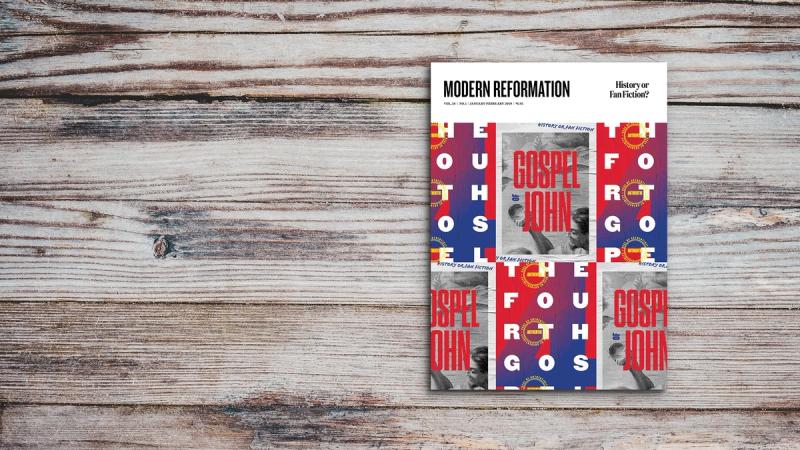I’m going to make an assumption. It’s risky, but I think I’m on safe ground. I’m going to assume that if you’re reading this, there’s a strong possibility that your world is white—your closest friends are white, your most trusted mentors are white, your pastor is white, the last several books you read were by white authors, and your church is predominantly white. That’s not an unusual story in Reformed and evangelical circles, and that’s the story of Daniel Hill, a Chicago church planter and author of White Awake: An Honest Look at What It Means to Be White. His claim is that race is a difficult concept for white Christians to grasp, and when the default setting in mainstream culture (and in many of our churches) is white, it’s sometimes hard to view one’s whiteness objectively; that is, to view it in such a way that we can better understand its consequences and effects in a diverse society. Hill helpfully and humbly guides the reader in the necessary work of examining our cultural identity (whoever we are) in relation to our identity in Christ.
White Awake begins with Hill’s sobering autobiographical account of his work as a church planter out of Willow Creek Community Church (the megachurch in the Chicago suburbs). After reading Dr. Michael Emerson’s Divided by Faith, Hill began a journey to plant a diverse, multiethnic church in the City of Chicago. Those familiar with “cage-phase Calvinists” may see similarities—whether it’s TULIP or racial justice, the newly initiated often demonstrate messianic tendencies toward the uninitiated (myself definitely included). Newly discovered truth often propels white people to fix the problem—by doing something. (In fact, as Hill argues, the search for an immediate fix has a lot to say about white cultural assumptions and values.) His journey was a mixture of failure and success, something he expands by using the motif of blindness as seen in Nicodemus and Jesus in John 3.
After describing his personal journey, Hill explores what “identity” is. His starting point is the gospel. The Bible, he says, “provides us with a unique and powerful motivation for pursuing wholesale, identity transformation in Christ” (41). Yes, we are born-again, baptized children of God and disciples of Jesus, but this doesn’t negate the role our social and national culture plays in shaping our identity. Identity transformation requires honesty, reflection, and seeing the significant forces that form our hearts, minds, and daily lives—a concept that Hill effectively marshals against the idea of “colorblindness.” Colorblindness is a buzzword used to signify a perspective that, while well intentioned, is more a product of misapplied theological truth than it is an accurate articulation of the universal worth of all human ethnicity. It minimizes the way cultural identity played a role in many stories of Old Testament characters, the incarnation of Jesus, the overtones of cultural identity in the early church, and God’s celebration of cultural diversity that reaches its climax in Revelation 7. Colorblindness is not the absence of racial prejudice; it’s an evasion or avoidance of the power of sin and its impact on the system of race that exists in America. Tolerance of sin is never acceptable in the life of a Christian; colorblindness shouldn’t be either.
He identifies seven stages that “mark the cultural identity process of a white person seeking transformation from blindness to sight” (49): Encounter, Denial, Disorientation, Shame, Self-Righteousness, Awakening, and Active Participation. Though perhaps not as logically necessary as the ordo salutis, Hill’s sequence of identity transformation does seem to accurately describe the journey some white people make when they realize that their unconsciously constructed narrative of life in America has been informed by factors they had been unaware of. It’s not an accident that the “do something” stage doesn’t occur until the very end. Hill wants those of us in the majority culture (i.e., white) to be “quick to hear, slow to speak, and slow to anger” (James 1:19), particularly when it comes to issues of race in the church and the broader culture.
Hill’s candor and directness, especially in issues of shame and self-righteousness, make this book immensely valuable, especially for a white audience. As a pastor in Southern California, I can attest that the issues Hill describes exist in my own heart and life and those in my community. Whether he’s describing a faulty theology of lament, low perseverance in pursuing racial justice, intellectual or social escape from the problems of our neighbor, or the psychological discomfort that results when you learn the history of race in America, Hill is a welcome guide. What’s the practical takeaway? Hill saves the application for the end; but without the cultural identity transformation sequence, I largely think his advice would fall on deaf ears. Still, there are some appreciated action steps that both pastors and parishioners can take in following Jesus on the issues of race.
One area where Hill’s work could be improved is providing his white readers with more examples of how and why racism is bigger, deeper, and more insidious than personal acts of bigotry. Speaking for myself, white cultural experience is largely designed to prevent me from observing structural and systemic discrimination. The area of systemic racism is where many white Christian friends start scratching their heads; somehow, we’re able to think systemically when it comes to abortion, secularization, or progressive sexuality, but discussions of racism are limited to the personal. Additional examples for the skeptics would go a long way in the continuing conversation.
Hill’s pastoral insights, sensitivity, and boldness in White Awake are deeply important and valuable. Whether you get the book to help lead a small group, cultivate a conversation among church ministry leaders, or inform your preaching, please get the book. It’s a work by a white pastor for white people, which is okay. But if we’re going to understand the consequences of valuing and normalizing white culture in our churches and communities, then we need all the help we can get.
Eric Chappell is a pastor at Trinity Presbyterian of Orange County (PCA) in Southern California.







